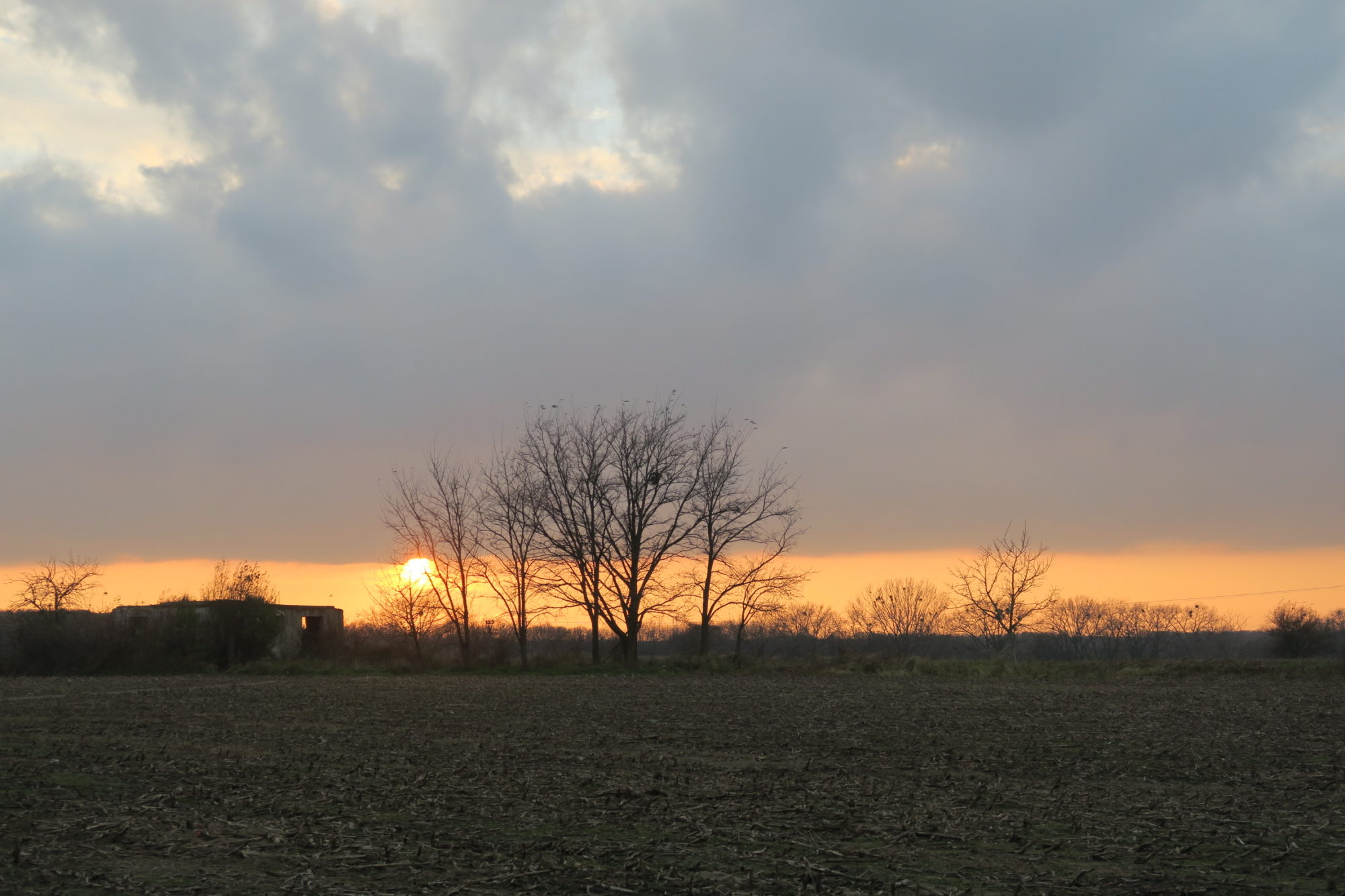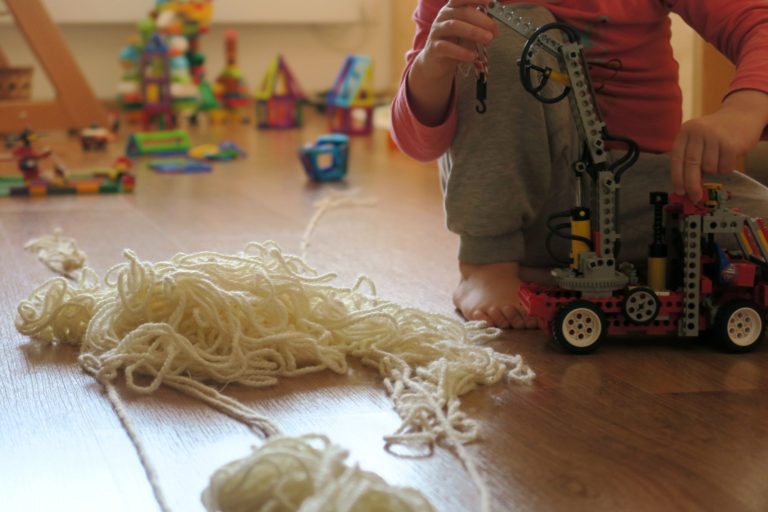
Few weeks ago I have started reading a book called Život na míru (free translation Tailor-Made Life) by Marek Rabij where he discuses clothes making in Bangladesh which serves as one of bases for fashion industry. I am struck and shocked by what I read in the book and suddenly some experiences from my life have clicked together. When I realized that Fashion Revolution Week is coming (18th – 24th April, 2022) I have decided to take action myself and choose some related activities for B. (3,5 years old).
“Something is wrong” glimpses
From my childhood I remember we usually shopped for clothes in second hands or Asian clothes shops. I recall a Slovak clothing brand (which is still a thing now) with quite a long history where we did not usually buy our clothes for being much more expensive than in Asian clothes shops. It was reserved for occasional Christmas gifts. At that time I did not think about why clothes from local brand is more expensive than clothes imported from Asia.
As a secondary school student I bought 15 meters of cutely printed woven fabric and decided to sew bed sheets for myself, my sister and my mom. It was not complicated, just rectangles, but it was quite difficult to handle such big pieces of fabric at a time. It took me what it seemed to be an eternity to finish. At the end I announced: “It is not worth it! Bought bed sheets are so cheap and I spent so much time with it.” Fashion revolution I tried to start for myself was abandoned immediately. I assigned inefficiency of me doing it to lack of industrial sewing machine and lack of routine in making. At that time it did not come to my mind that sewing workers may be underpaid.
Adulthood
In my hometown there were no big shopping centers with many foreign fashion brands before 2009. In that particular year two of them were opened. I remember my mom mentioning what her colleagues had said: why would they buy clothes in Asian clothes shops when foreign branded clothes’ prices were comparable. At that time I did not think about the reason. It did not occur to me that clothes may be almost the same but what may make them different is the label.
Few years later I bought new slim magenta color trousers – I used to like wearing colorful clothes back then. I put them to wash as usually when I buy a piece of clothing. Then wore them. When I took them of I realized that my thighs and calves were red and itchy. I put them to wash again but it did not help, the situation with redness and itchiness repeated. So I let trousers soak in vinegar water overnight and then in sodium bicarbonate water. I had no idea whether it would help but it did! So I was happily wearing my new trousers. At that time I did not think about possibility of harmful chemicals being present in the fabric which caused problems to me but definitely was dangerous for people making that kind of trousers daily for months or years. I postponed my fashion revolution…
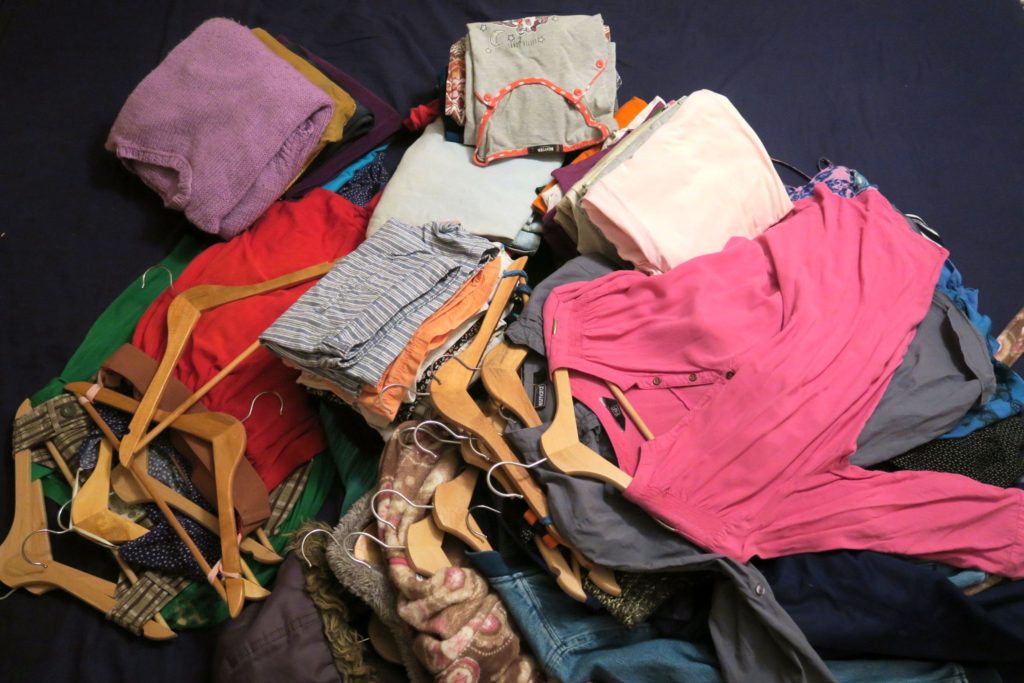
Resources
Marek Rabij’s book
My first resource was the book by Marek Rabij mentioned above. It was published in 2016 in Polish language, I read its Czech translation from 2021. Stories of individual people mentioned there are unbelievable for me. Existence of such living and working conditions is not surprising but it is shocking how modern democratic western world creates and supports these conditions. Pretending not knowing about it!
In the book there is a story of 20-years old Rahina from Mirpur (pp. 53 – 58). She lost her job in a sewing factory because a crowd broke her leg while compulsorily participating on Guiness world record. Her 4-members family lives from about 30 €/month. Accommodation costs 15 €/month, drinking water 3 €/month, access to cooking gas cylinder 5 €/month. This family saves their money by not using electricity and preferring cooking on open fire burning trash (therefore they do not pay for cooking gas cylinder). They are left with 12 €/month. One kilogram of the cheapest rice costs 0,3 € which means they can buy 40 kilograms of rice which is enough for 80 meals for a person for a month. It is 2 – 3 meals a day. And the family is out of money, there are no expenses for hygiene, clothing, doctors or others included.
Videos
I watched just few videos and I am sure there are more of them. So here they are:
- The True Cost: Who Pays the Real Price for YOUR Clothes (2015) – link to the investigative documentary
- The clothes we wear (2020) – link to the documentary
- The Ugly Truth Of Fast Fashion (2019) – link to the talk show episode
Articles
Here I list just few of many articles about fast fashion and ethical fashion:
- Stitched Up: The Anti-Capitalist Book of Fashion – review
- What is Ethical Fashion? Here’s What You Need to Know
Of course, brands are confronted about the problems in the industry and they often claim they collaborate just with certified manufacturers that are allowed to export to the west and which are supposed to be listed with The Bangladesh Garment Manufacturers and Exporters Association (BGMEA).1 However, these manufacturers may pass the order to those that are not listed with BGMEA.1,2 By buying clothes in most of the clothes shops people support child work, underpaid work, work in dangerous, often deadly, conditions, pollution, starving, lack of drinking water. So people making clothes for us pay the cost we do not pay for our cheap clothes…
Our family fashion revolution
I did not want to inform B. about all the injustices in the clothes making process I have learned about so far. But I still wanted to inform and offer him solutions and choices that I consider more sustainable to become normal for him.
I remember myself being happy and proud about my colorful, original and nice clothes which my mom made for me and my sister when we were little. It was our normal. And I want B. to experience something similar. Mom also made clothes for our dolls and later I started to make clothes for them too. Then I succeeded and got a spot in the secondary school where I studied costume designing and where I learned how to sew with a sewing machine. I started to make clothes and accessories, especially for me. And here I am now, trying to provide clothes for B., me and also M.
Lifestyle
As far as I can remember I went shopping for clothes just for fun when I was still living in my hometown which must have been in 2016. Since then I bought just necessary items – some pregnancy pieces and underwear. I dedicated time to choose few pieces of clothes that I wear very often until they wear out and then I cut them to toilet cloths, cut them into pieces to create something else – clothes for B., patchwork playmat, bags for activities…
Regarding clothes B. is the most demanding person in our family. He, as all the children, grows so quickly that I need to swap his wardrobe every few weeks. My friend lent us bags of clothes her children wore, so we really have a lot of clothes. But sometimes we miss some pieces, e.g. sweatpants or leggings wear out quickly. Then I check the websites where people sell stuff they do not need any more. Sometimes B. receives clothes as a gift from family members.
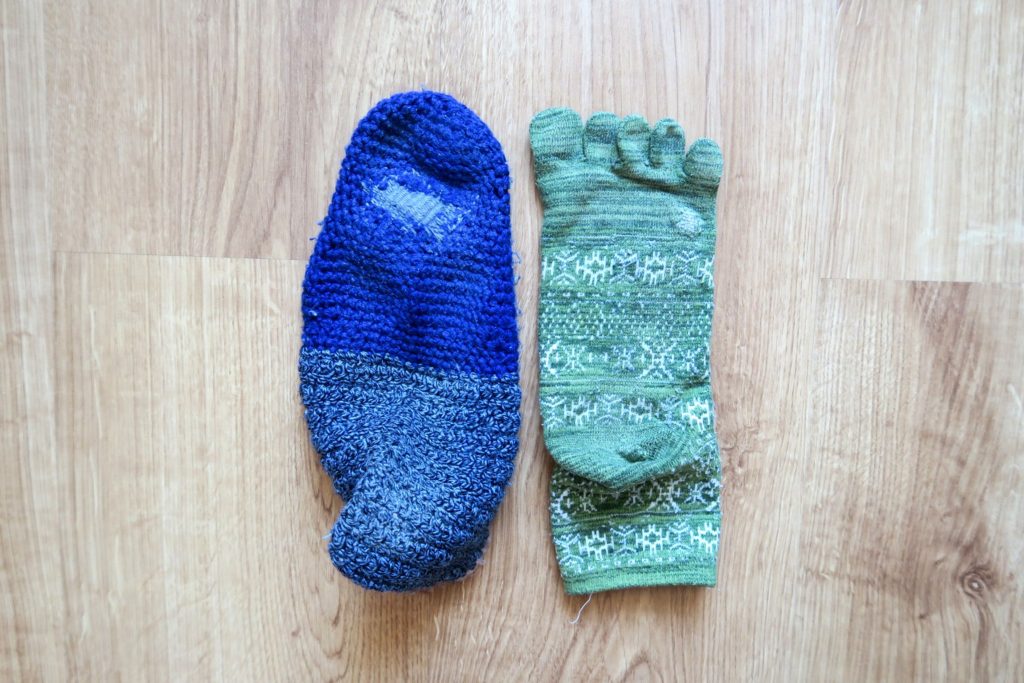
Recently I tried darning my socks because I inherited darning mushrooms after B.’s great-grandmother. It is not that difficult, I successfully darned few holes on my socks.
I sew clothes (you can check some here), mainly for B. For that I usually use my old clothes. B. is aware of the process and he participates in some phases. I need to make or print out the sewing pattern, cut out the fabric pieces, pin and sew them together. B. chooses color of the thread and presses the foot pedal on the table while I navigate the fabric under the presser foot. Then he proudly and gladly wears what we made. Unfortunately, one pair of leggings was too tight so he did not wear it much. I was really happy he was able to say why he does not like it.
When I need to buy clothes now, I try to find someone in my country to make it and someone who uses natural fibers. My last purchase was a hand-knitted wool cardigan which is beautiful, comfortable and made with love in peaceful conditions. Somehow I can feel all of that from the cardigan. It is also an aesthetic home accessory when I do not wear it and it hangs on the clothes hanger on the side of my wardrobe. Of course, buying this kind of clothes is probably more expensive but I know to whom I pay and for what. Usually this kind of clothes is more durable and because of its price I take a very good care of it.
With new clothing pieces I am also careful it has the widest means of use possible – I buy neutral colors, shapes that fit any situation. This way I do not need as many pieces.
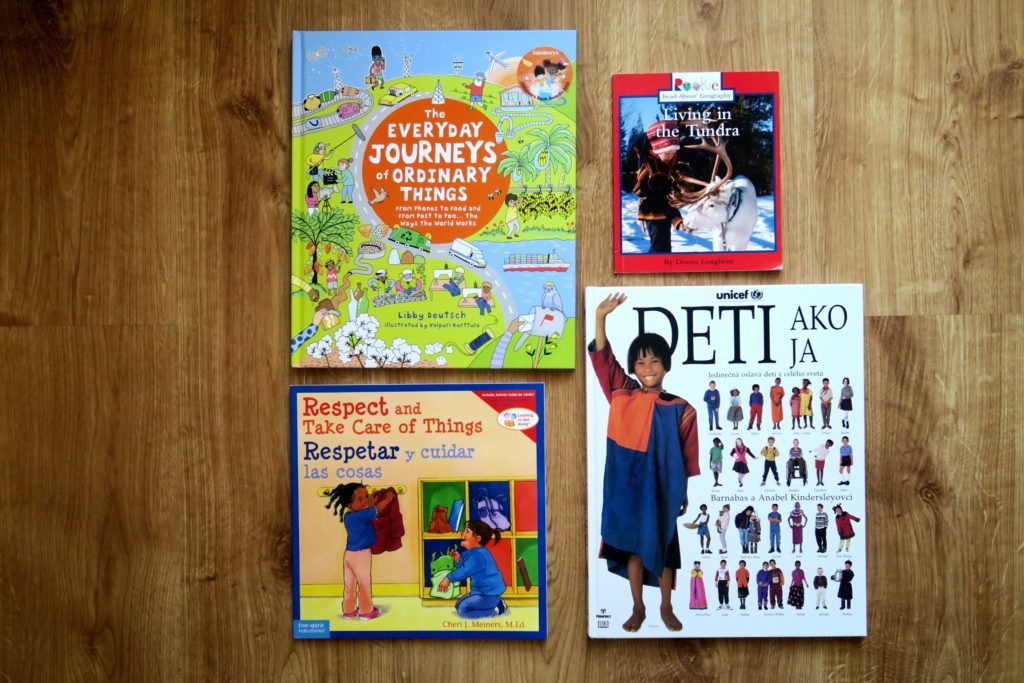
Books
Children Just Like Me (1995 version) by Barnabas and Anabel Kindersley. Children in this book wear various styles of clothes adapted to the climate and culture of the area where they live to their economic possibilities and so on.
Living in the Tundra by Donna Loughran. People in this book wear clothes made of not so common materials and are of typical shapes and colors.
Respect and Take Care of Things by Cheri J. Meiners. A girl puts away her clothes so her room is neat, comfortable and safe.
The Everyday Journeys of Ordinary Things by Libby Deutsch. Two pages in this book are dedicated to clothes making process. The author do not hesitate to depict also harmful practices of the industry – dyeing, sandblasting or bleaching.

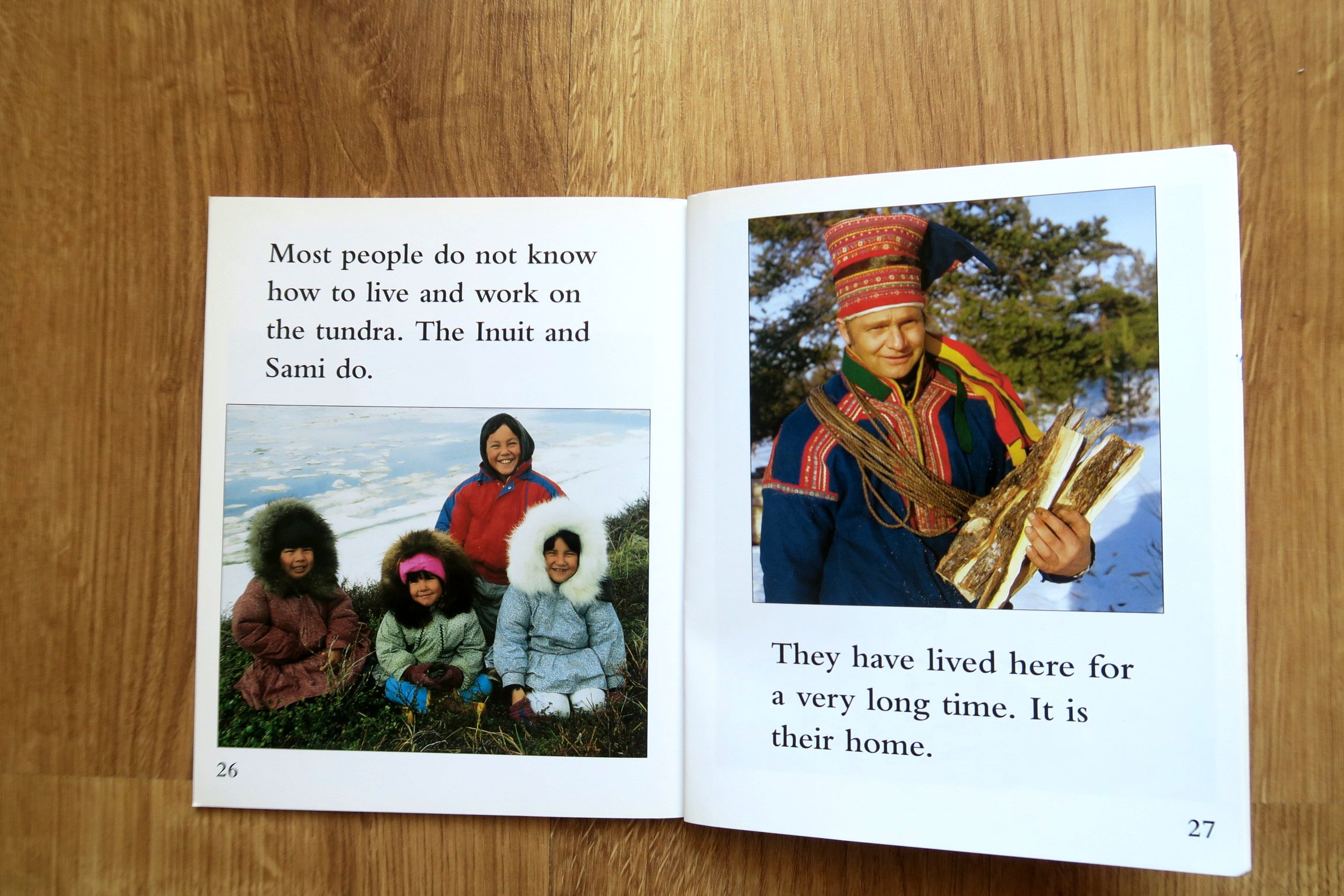


Write to a person who made my clothes
As much as I would like to write a thank you letter or postcard to those people from the other side of the world, it is impossible. For us they are strangers about whom we usually do not think – they may be dehumanized in our eyes, we may consider them to be something like a machine.
I wrote a thank you postcard to a person who knitted my cardigan mentioned above. I found an inspiration for this activity on Fashion Revolution website.

Where are our clothes made
I found a tip on this activity on the Fashion Revolution website where I also downloaded a map. I took out all the clothes I have in my closet and checked the labels. A lot of my clothes did not have labels with the country of origin, some labels were worn out and therefore unreadable. Clothes with labels come from Europe or southeast Asia. Going through my wardrobe, touching my clothes I looked at my clothes completely differently. I thought about the people who made it, how tired or stressed they might have been. Although I wear my clothes as much as possible, my determination increased even more.
Clothes I checked were not all the clothes I own. Some pieces are out of rotation for now as I intend to focus on few pieces at the time and wear them out. Some of my clothes are too small and I still hope to lose some weight and make them comfortable for me again. Probably later I will find another home for them.
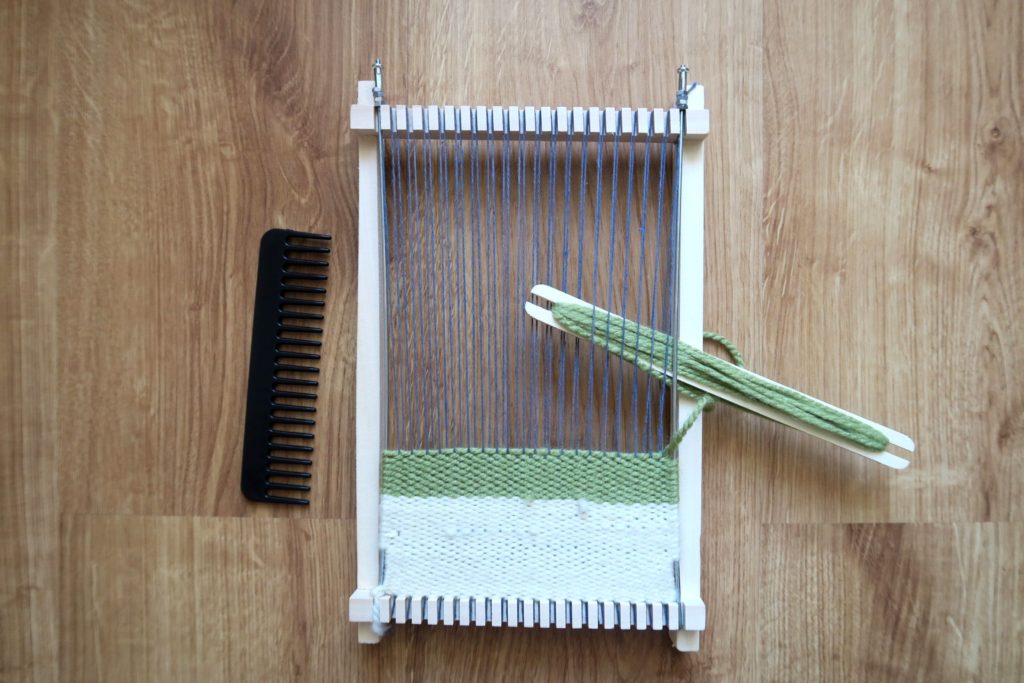
Weaving activity
With B.’s help I set up a weaving frame and showed him the activity. I did not expect him to be much interested in it and he was not. Never mind, he learned new words: weaving frame, weaving loom, warp, weft, shuttle, shed. I showed him other woven fabrics, mats we have at home. He also saw how long it takes to make a small piece of woven mat. When it is finished, it is going to be a mat under a flower pot.
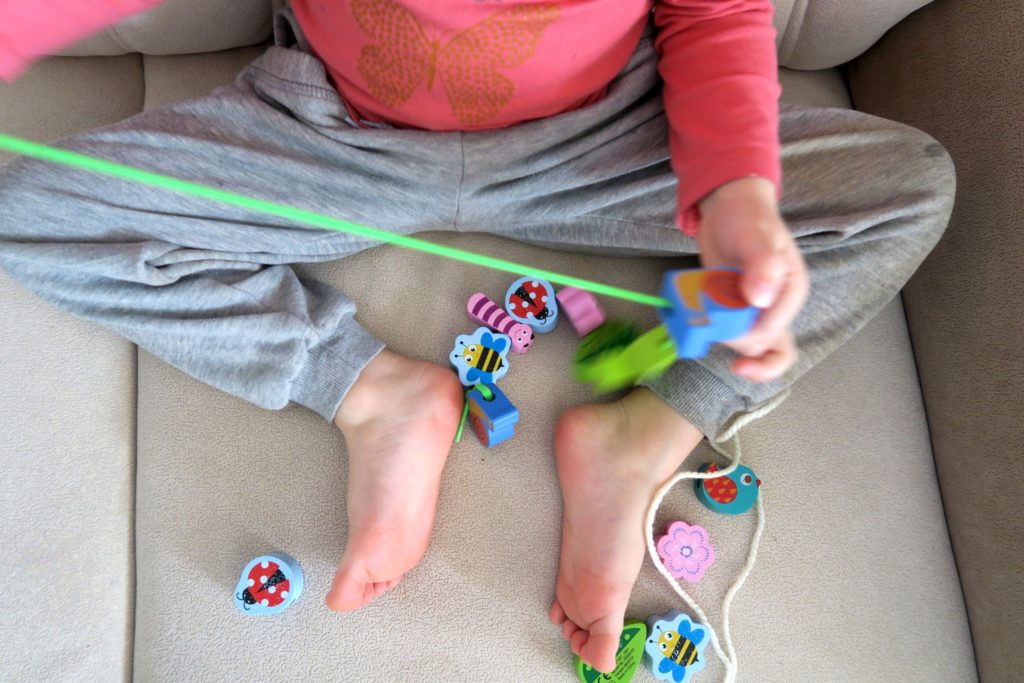
Stringing beads
Classic and easy activity. For the first time B. showed interest in it, he returned to it for several times and wore a necklace. Later I swapped the beads for smaller and he practiced with them too.
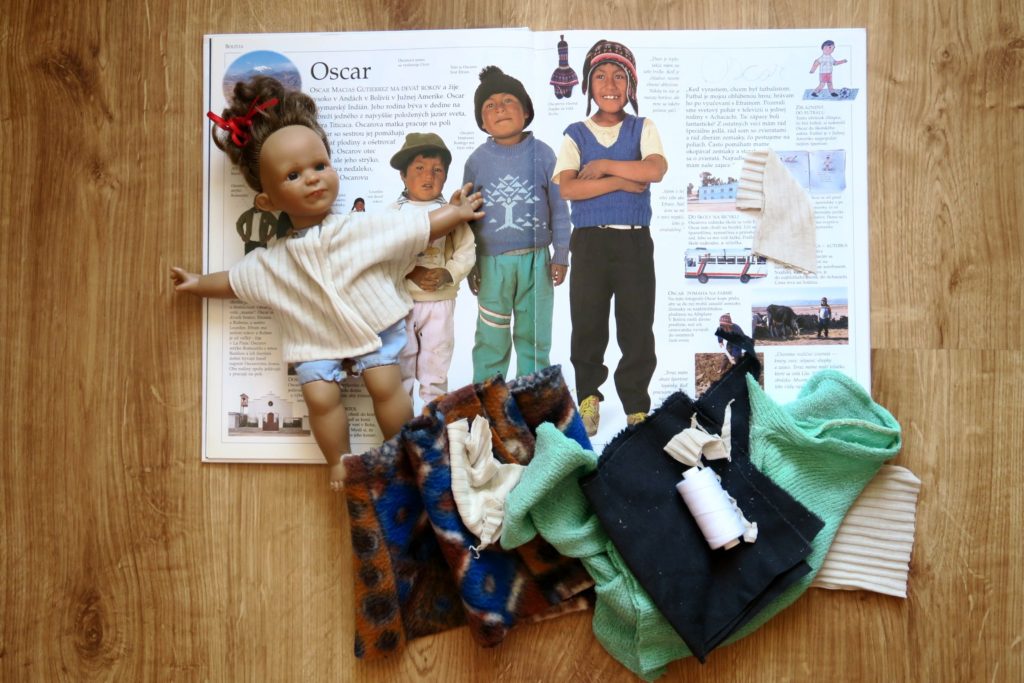
Sewing clothes for a doll
I asked B. to go through the book Children Just Like Me and choose one child whose clothes I would sew for his doll which used to be mine in my childhood. He chose Oscar Macias Gutierezz from Bolivia. Together we chose fabrics from my scraps collection and I started with a shirt. This activity is not finished yet; however, again, B. sees how much time and effort it takes to make clothes.
Song
I also found a song and a book about variety of clothes people around the world wear. It is available to read and listen to here.
Our choices do not affect just us, they affect many people around the world now and in the future too. I try to take as much responsibility as my knowledge and capability allow me. What are your choices?
Notes
1 The clothes we wear. 2019. DW documentary. [online]. [2022-04-17]. Access: <https://www.youtube.com/watch?v=-64wZkdPRew>.
2 Rabij, M. 2021. Život na míru. Žilina: Absynt, 2021. 165 p.
